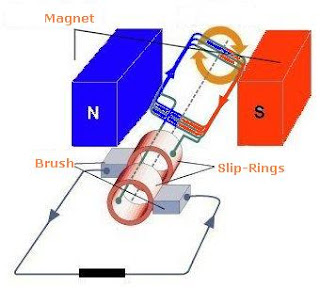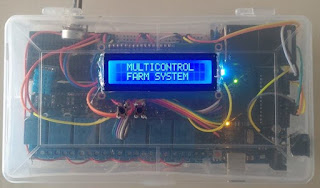Work AC Generator Principle In Producing Electrical Energy - Generator is a machine that can convert motion (mechanical) energy into electrical energy (electric). Energy that drives its own generator of various sources. On wind power plants such as generators move because of the winding spinning wheel. Similarly, in hydroelectric power plants that utilize the energy of motion from water. While on the generator's generator power generated from the combustion process of diesel fuel.
 |
| Physical form of AC generator |
Generators apply electricity generation principles based on magnetic induction. The main elements for induction power exports are:
- Magnetic field
- Conductor (coil)
- Relative speed
 |
| Electric motion on the generator |
According
to Faraday's law, the coil currents rotate in the magnetic field or
otherwise the magnetic field rotates inside the coil, then at the ends
of the coil it will generate an electric motion force (voltage).
The magnitude of the voltage induced in the coil depends on:
- Strength of the magnetic field.
- length of the carrier in the coil.
- speed of play (movement).
Therefore the formula of the induced voltage generation is:





